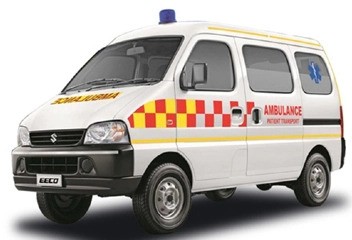Private Ambulance Services - Secunderabad, Hyderabad
Rate This Business

Emergency Medical Technicians (EMTs) and Paramedics Ambulance services are staffed with skilled professionals known as Emergency Medical Technicians (EMTs) and Paramedics. These highly trained individuals are equipped to handle a variety of medical emergencies and provide immediate care to patients while en route to the hospital. Equipped with Advanced Medical Equipment Ambulances are equipped with advanced medical equipment and supplies necessary for stabilizing patients during transport. This includes life-saving equipment such as defibrillators, oxygen, cardiac monitors, and medications. Having these resources readily available in ambulances enhances the chances of saving lives and improving outcomes. Variety of Ambulance Types Different medical conditions and scenarios may require different types of ambulances. For example, Basic Life Support (BLS) ambulances are typically used for non-critical patient transfers or those with stable conditions, while Advanced Life Support (ALS) ambulances are equipped with additional equipment and staffed by paramedics to handle more complex medical situations. Non-Emergency Medical Transportation Ambulance services may also provide non-emergency medical transportation. This service helps individuals who may require medical supervision during transportation, such as elderly patients, patients with limited mobility, or those needing specialized care. Collaborations with Emergency Departments Ambulance services have close collaborations with emergency departments and hospitals to ensure seamless patient transfers. This allows for greater coordination between pre-hospital care providers and medical facilities, enabling faster and more efficient delivery of healthcare services. Pre-Hospital Care and Triage EMTs and paramedics provide vital pre-hospital care, assessing patients’ conditions and administering necessary treatments before reaching the hospital. They are trained to conduct quick triage, prioritizing patients based on the severity of their injuries or illnesses to ensure the most critical cases are addressed first.
Report Incorrect All Fields are Mandatory
Please enter correct information...
Claim ReportAll Fields are Mandatory
Please enter correct information...